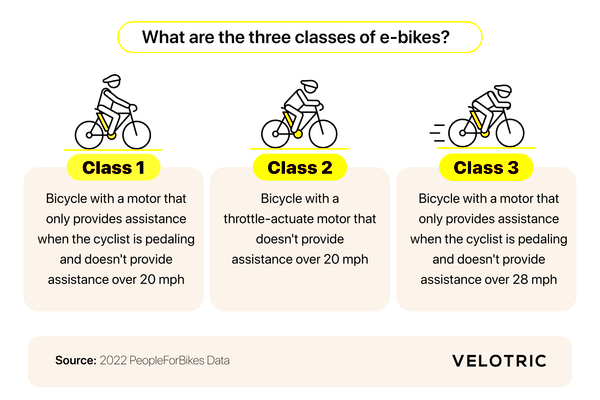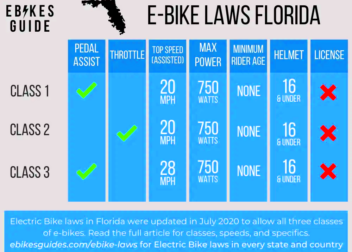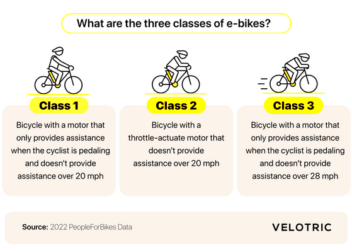E-Bike Laws by State and What Riders Need to Know
Electric bikes, commonly known as e-bikes, have surged in popularity over recent years. They provide a great way to travel without the hassle of traditional vehicles. However, with this rise in use comes the need for clear laws and regulations to keep riders safe and ensure responsible use. E-bike laws can vary significantly by state, and understanding these rules is crucial for every rider. This blog post will guide you through the essential aspects of e-bike laws, helping you navigate the rules in your area.
Overview of E-Bike Classifications
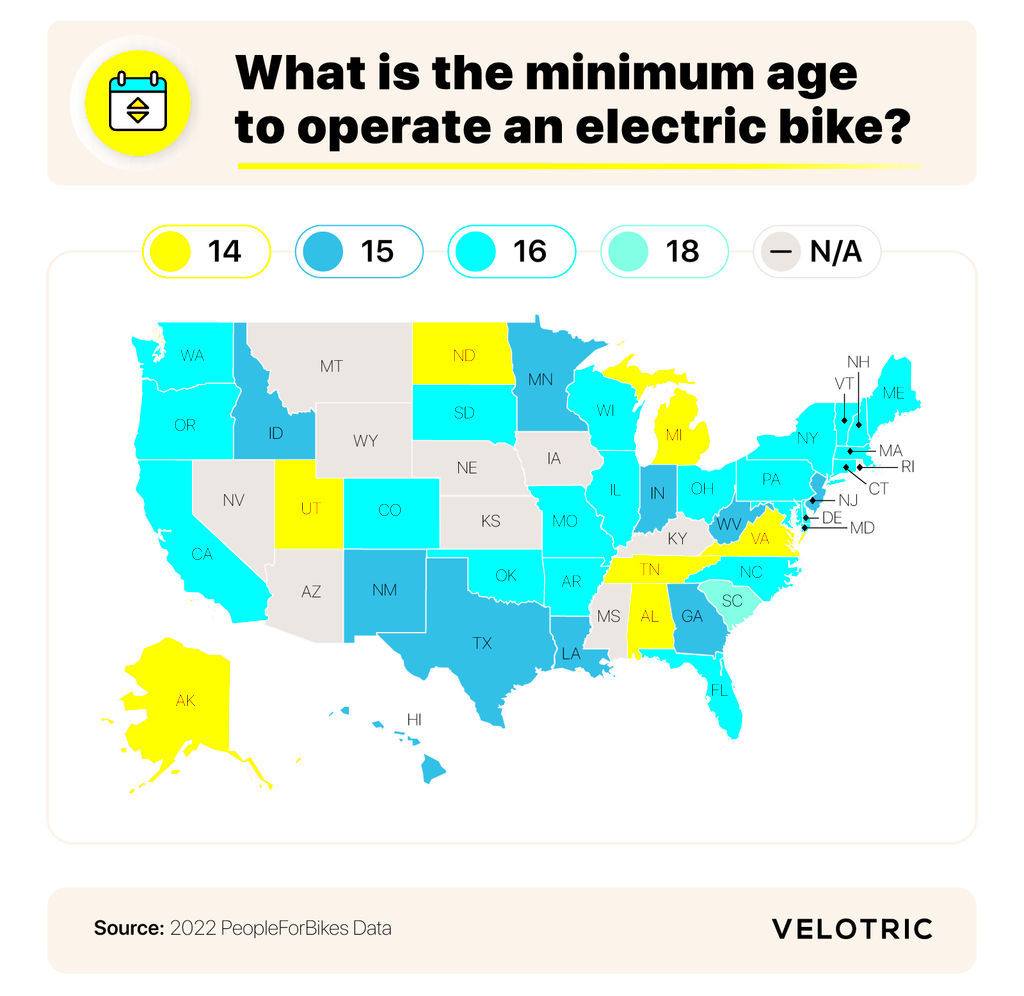
E-bikes are generally classified into three main categories based on their power and speed:
- Class 1: These e-bikes are pedal-assist only, meaning they provide assistance only when the rider is pedaling. They stop assisting at speeds over 20 mph.
- Class 2: These e-bikes come with a throttle, allowing the rider to pedal or use the throttle for assistance. Like Class 1, they also stop assisting at 20 mph.
- Class 3: These are also pedal-assist bikes, but they can assist up to 28 mph. Some states have specific regulations regarding where Class 3 bikes can be ridden.
Understanding these classifications is vital, as they dictate where you can ride and what regulations apply to you. It’s essential to check your local laws to see how your e-bike fits into these categories.
State Specific E-Bike Laws
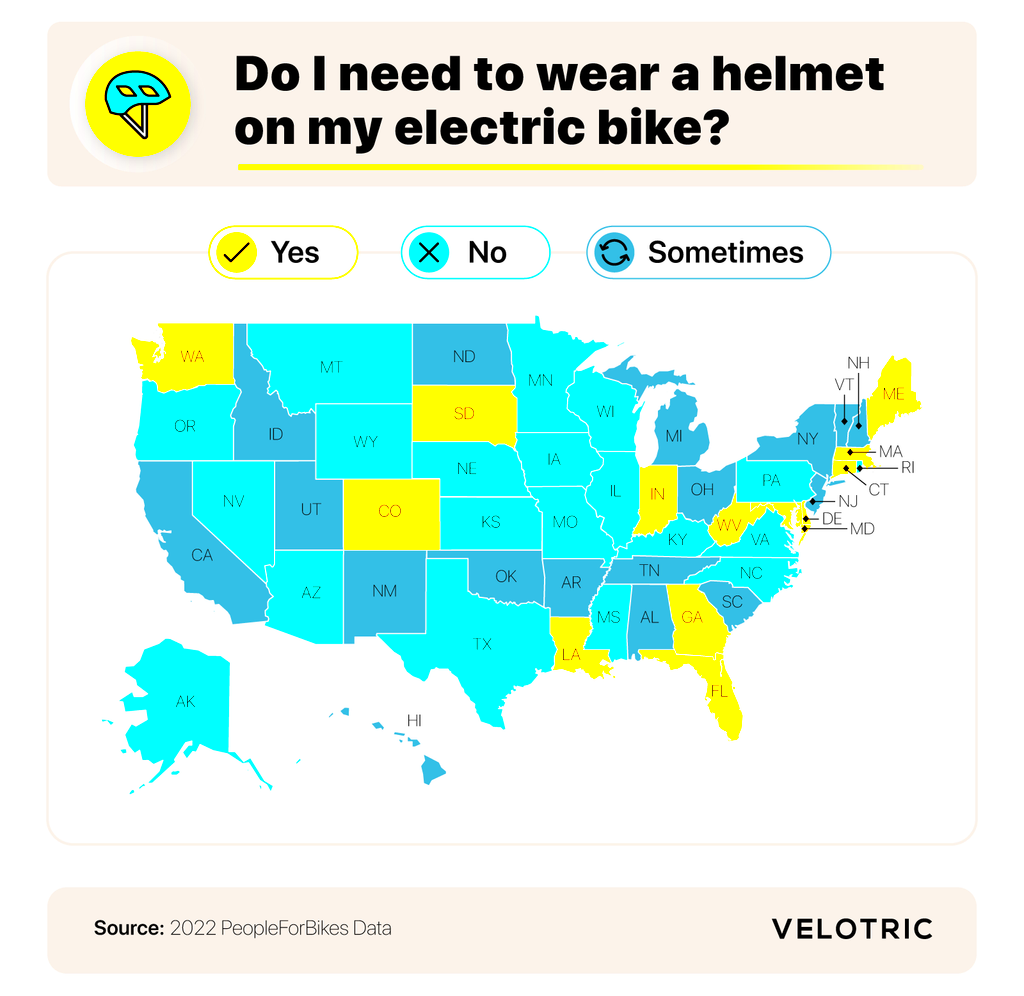
E-bike laws differ widely from state to state, and it’s crucial to be aware of these differences. Here’s a brief overview of how some states handle e-bike regulations:
| State | Class 1 Allowed | Class 2 Allowed | Class 3 Allowed | Helmet Requirement |
|---|---|---|---|---|
| California | Yes | Yes | Yes | No (under 18) |
| New York | Yes | Yes | Yes | Yes (for all) |
| Texas | Yes | Yes | No | No (under 17) |
These regulations may also specify where you can ride your e-bike. For example, some states allow e-bikes on bike paths but not on sidewalks or certain roads. Always check your local laws for the most accurate information. Being informed not only keeps you safe but also helps in promoting a positive image of e-bikes in your community.
Requirements for E-Bike Registration
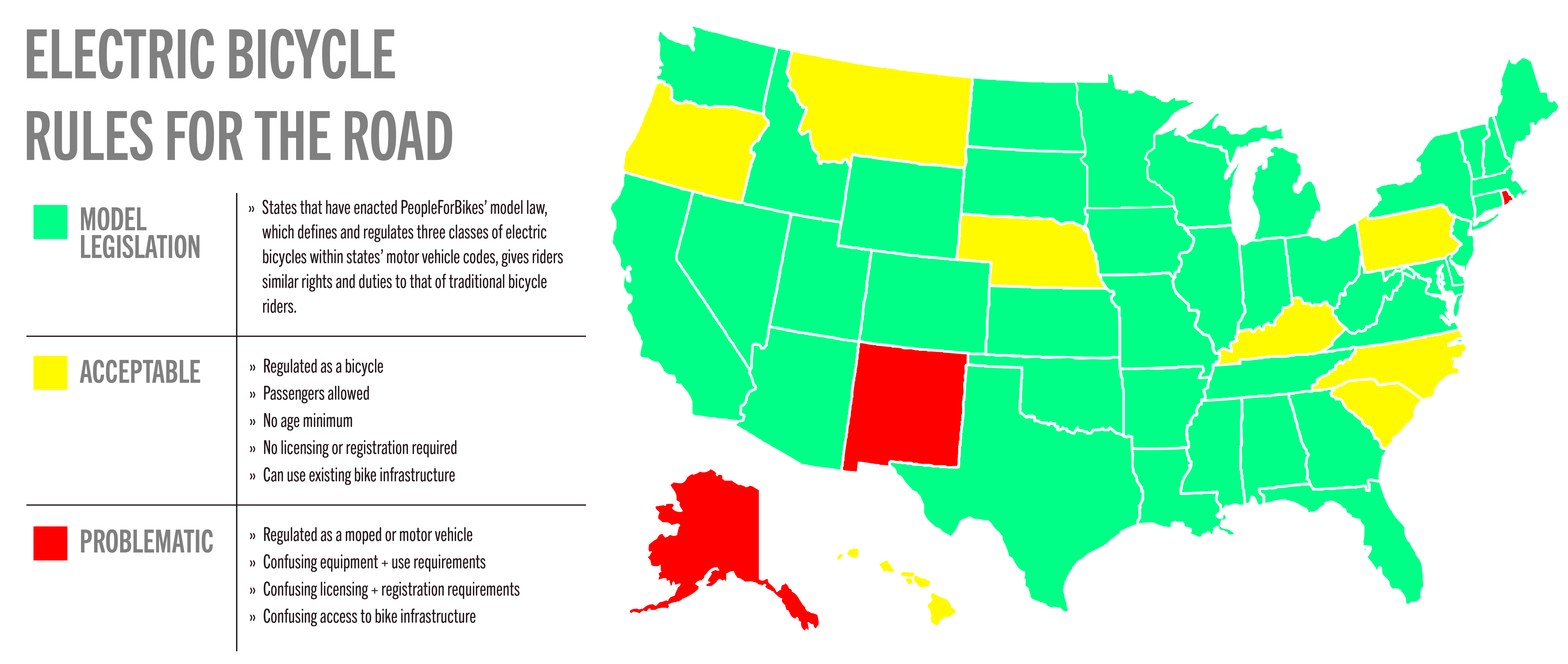
When it comes to e-bike registration, requirements can vary significantly depending on where you live. While some states require registration, others do not. Understanding these requirements can save you from potential fines and legal issues. Here’s a quick rundown:
- Registration: In some states, like California, you may need to register your e-bike if it exceeds a certain wattage. Typically, e-bikes with motors over 750 watts require registration.
- License Plate: Some jurisdictions may require a license plate for e-bikes, particularly Class 3 models. This helps law enforcement identify the bike in case of theft or violations.
- Age Restrictions: Many states have age limits for e-bike riders. For example, riders under 16 may need parental consent or supervision.
- Identification: Always carry valid identification when riding your e-bike. This can help prove your age and identity if questioned by authorities.
Before hitting the road, it’s a good idea to check your local Department of Motor Vehicles (DMV) or equivalent authority for the most up-to-date registration requirements. Being informed not only keeps you legal but also enhances your riding experience.
Safety Regulations for E-Bike Riders
Safety should always be a top priority for e-bike riders. There are specific regulations designed to protect you and those around you. Here are some essential safety guidelines:
- Helmet Use: While not universally mandated, wearing a helmet is highly recommended. Some states require helmets for riders under a certain age.
- Visibility Gear: Using lights and reflective gear can significantly enhance your visibility, especially when riding at dusk or dawn.
- Traffic Laws: E-bike riders must obey the same traffic laws as traditional cyclists. This includes stopping at stop signs, obeying traffic signals, and riding in the correct direction.
- Road Awareness: Always be aware of your surroundings. Watch for cars, pedestrians, and other cyclists. Using hand signals when turning or stopping is essential for safety.
Following these safety regulations can help prevent accidents and ensure a positive experience for everyone on the road. Remember, safe riding is smart riding!
Insurance and Liability Considerations
Insurance for e-bikes is a crucial consideration, especially as more people take to the roads. While not always mandatory, having coverage can provide peace of mind. Here’s what you need to know:
- Types of Coverage: There are different types of insurance for e-bikes, including liability, collision, and comprehensive coverage. Liability insurance covers damages you may cause to others, while collision and comprehensive insurance cover damages to your own bike.
- Homeowners or Renters Insurance: Some policies may cover your e-bike, so check with your provider. This can save you from needing a separate policy.
- Liability in Accidents: If you cause an accident while riding your e-bike, you could be held liable for damages. Having adequate insurance can protect you financially in such cases.
- Premium Costs: E-bike insurance premiums are generally lower than car insurance, making it an affordable option for many riders.
In summary, while insurance for e-bikes may not be legally required in every state, it is wise to consider the potential risks involved in riding. Being proactive can help protect you and your finances in the event of an accident.
Tips for E-Bike Riders to Stay Compliant
Staying compliant with e-bike laws is essential for a safe and enjoyable riding experience. Here are some practical tips to help you navigate the rules effectively:
- Know Your State’s Laws: Every state has different regulations regarding e-bikes. Take the time to research the specific laws in your area to avoid any misunderstandings.
- Understand Classifications: Familiarize yourself with the three classes of e-bikes. Knowing which category your bike falls into can help you determine where you can ride and what rules apply.
- Wear Proper Safety Gear: Always wear a helmet, and consider additional protective gear like knee and elbow pads. Visibility is key, so use lights and reflective clothing, especially in low-light conditions.
- Follow Traffic Rules: Treat your e-bike like any other vehicle on the road. Obey traffic signals, stop at stop signs, and use hand signals when turning.
- Regular Maintenance: Keep your e-bike in good condition. Regularly check brakes, lights, and tire pressure to ensure safe riding.
By following these tips, you can ride with confidence and contribute to a positive perception of e-bikes in your community.
Frequently Asked Questions
Here are some common questions that e-bike riders often have:
- Do I need a driver’s license to ride an e-bike? Generally, a driver’s license is not required, but some states may have age restrictions.
- Can I ride my e-bike on the sidewalk? This depends on state laws. Some places allow it, while others restrict e-bikes to bike lanes or roads.
- Are e-bikes allowed in national parks? Regulations vary by park. Check the specific rules of the park you plan to visit before riding.
- What should I do if I get pulled over? Stay calm and comply with law enforcement. Be prepared to show identification and discuss your bike’s classification.
If you have any other questions, don’t hesitate to reach out to local authorities or biking organizations for clarification.
Conclusion on E-Bike Laws and Rider Responsibilities
Understanding e-bike laws is crucial for every rider. As e-bikes continue to gain popularity, it’s vital to stay informed about regulations in your state. By following the tips mentioned earlier, you can enjoy a safe and compliant riding experience. Remember, as an e-bike rider, you share the road with pedestrians and other vehicles. Your actions contribute to the overall safety and acceptance of e-bikes in your community.
Staying informed, being responsible, and practicing safe riding will not only keep you within the law but also promote a positive image of e-bikes. Happy riding!
